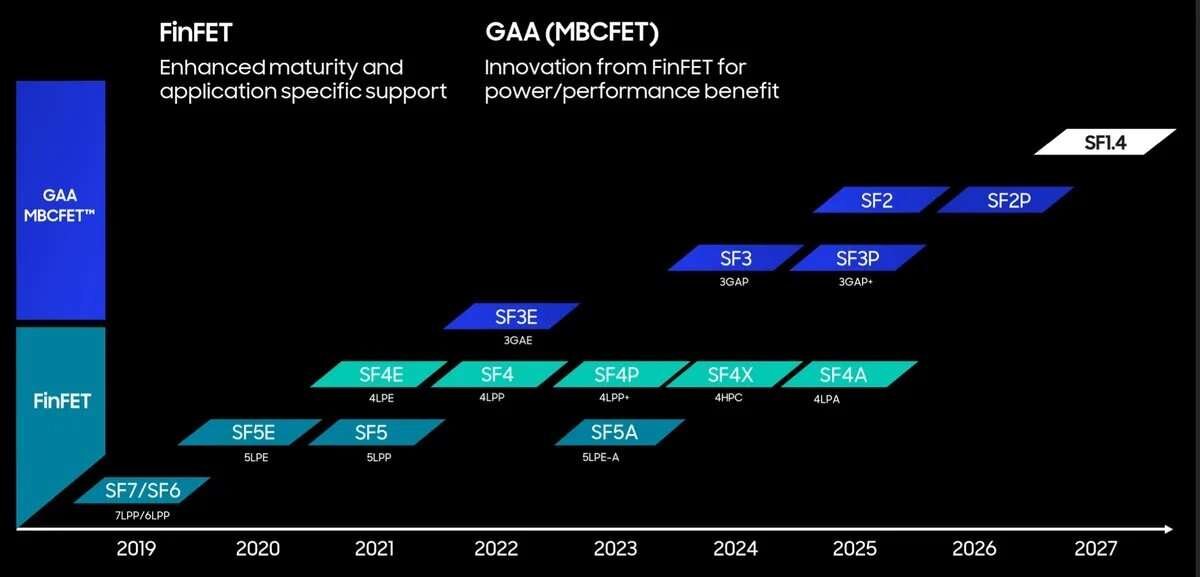At the Samsung Foundry Forum 2022, the contract manufacturer defined its ambitious goals up to the year 2027. Accordingly, the 2 nm production at Samsung is still planned for 2025, with 1.4 nm to follow two years later. But Samsung also has capacity expansion and stacking in mind.
Samsung sees itself as a leader in 3nm manufacturing, as the company was the first to implement the new Gate All Around (GAA) transistor technology as a series product. However, how good this is so far cannot be said independently, because there are still no tangible products based on this advanced production.
Nevertheless, the ATM technology is the step into the future, which is shown with many expansion stages and is being tackled by Samsung: As already explained a few years ago, the 2 nm production will follow in 2025 as the next big step, until then the first 3 nm solution and further improved it in at least two steps. At 2 nm, also at least in duplicate, the next step will follow by 2027, 1.4 nm production.
 Foundry plans through 2027 (Image: Samsung via Twitter)
Foundry plans through 2027 (Image: Samsung via Twitter)However, the focus on ATMs at Samsung Foundry does not mean that previous technologies are left behind. The 4 nm production with classic FinFETs will continue to be used in various stages in the coming years. After the initial problems with the first 4 nm variant, Samsung seems to have a lot of trust in the technology here. It is also interesting in this context that the first stage of ATM production will only come onto the market in improved form from 2024 – here, too, the problems of the initial phase seem to be solvable without major changes.
Increased Capacity and Stacking
With the creation of new technologies, Samsung will also promote capacity expansion. Here, however, the statements remain vague, there is talk of more than tripling the advanced capacity by 2027 compared to the current year 2022. This should not be rocket science but rather an almost logical step in order to have sufficient capacity for major customers in the respective to have new nodes.
One area where Samsung is lagging behind is stacking. Like many other manufacturers, Samsung has rudimentary solutions in its range, but advanced stacking is still a few years away. The original X-Cube with microbumps, which was announced in 2020, will not really be available until 2024, a version without microbumps only from 2026.